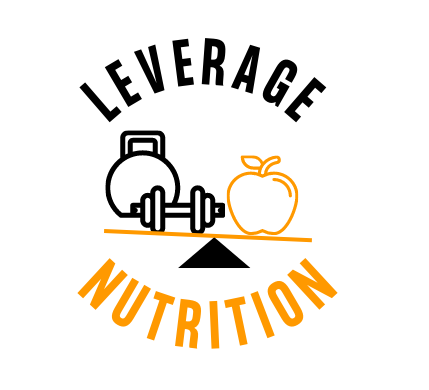
What Are Athlete Plates?
They are visuals on how athletes can combine different foods and drink at meals, which will help them match their energy and nutrient needs for different training/exercise intensities and goals. With this approach the athlete doesn’t have to track calories or different macronutrients, rather just focus on proportions. This is an easier and more flexible approach to adhere to long-term.
The main component of each plate is a portion of whole grains/grains, protein, and fruits/vegetables. An easy way to remember this is “Carb, Protein, Color.” Each plate has different training goals and intensities associated with them (see images below).
- What is a Carb? Carb = Carbohydrates. These are foods like bread, pasta, and rice (fruits and vegetables also can be a carb, but for simplicity’s sake we’ll refer to them as “color”). Carbs are the body’s predominate fuel source when performing higher intensity exercise/workouts.
- What is Protein? Protein are foods like meat, fish, eggs, beans, and nuts. Protein is used by the body to build and repair tissues, like muscles after intense exercise/workouts.
Disclaimer: The Athlete Plates you see in this document are not the original work of Leverage Nutrition, rather they are an adaptation of the Athlete’s Plate® by the University of Colorado.



Understanding The Differences
Below are the main differences between the plates:
- Different proportions of different food types
- Beverage options: (+) Juice offered with Moderate and Hard Plates
- Beverage size: +100ml with each increase with each increasing plate type
- Of note: +100ml is not enough to account for total increase necessary, rather this is just a suggestion that more is needed and will help add a more practical amount)
- Fat serving sizes: 1-3 tsp (Easy), 1-2 Tbsp (Moderate), 2-3 Tbsp (Hard)
- Lean Protein (Easy), Protein (Moderate and Hard)
- Whole grain (Easy & Moderate), Grains (Hard)
The above differences, and different proportions, all help the athlete consume more/less energy (calories) from food. For example, larger servings of fat will help the athlete consume more energy, and vice versa.
“Lean Protein”, and “Protein” are different options since lean protein has less energy, which is needed with the Easy Plate.
The Hard plate suggests Grain vs Whole Grain. Whole Grain (think brown bread) contains more fibre than Grain (think white bread), and is something that makes you feel full. It’s possible that having too much fibre can make you feel too full and not eat enough food (energy). Fibre is also found in fruits and vegetables, which is why their proportion decreases with increasing training intensity.
Like fibre, but to a greater extent, protein also makes you feel full. Therefore, it’s kept at 1/4 plate proportion with all plates.
How to Implement
Eat plate type at each meal based on goal and activity level.
Easy Plate
- Goal: weight/fat loss
Moderate Plate
- Goal: weight maintenance/sport performance with 1-hour moderate intensity exercise
- Eat more/less based on hunger
Hard Plate
- Goal: building muscle/weight gain
- Goal: weight maintenance/sport performance with 1-hour high intensity exercise or 2 hours moderate intensity exercise
- Eat more/less based on hunger
Other things to consider:
- Bigger person bigger plate
- In addition to 3 meals per day, should have 2-3 snacks
- For some, might need to personalize (e.g., if trying to gain weight and eating Hard Plate but not working)
- Important to understand this is just one strategy (that isn’t perfect) to help simplify athlete food intake
Examples
Breakfast Easy Plate

Breakfast Moderate Plate

Breakfast Hard Plate

For more examples click here to download a pdf of our Athlete Plates resource.
Thanks for reading. Here are some other ways we can help:
Free:
Weekly email: 1 Recipe & Nutrition Tip
Social Media: Instagram / Tik Tok / Facebook
Paid:
